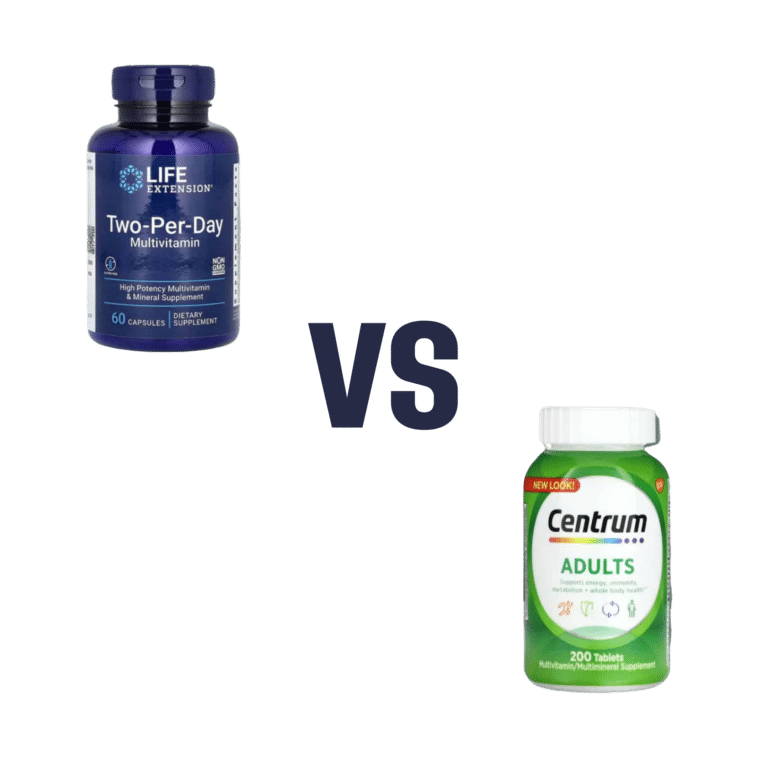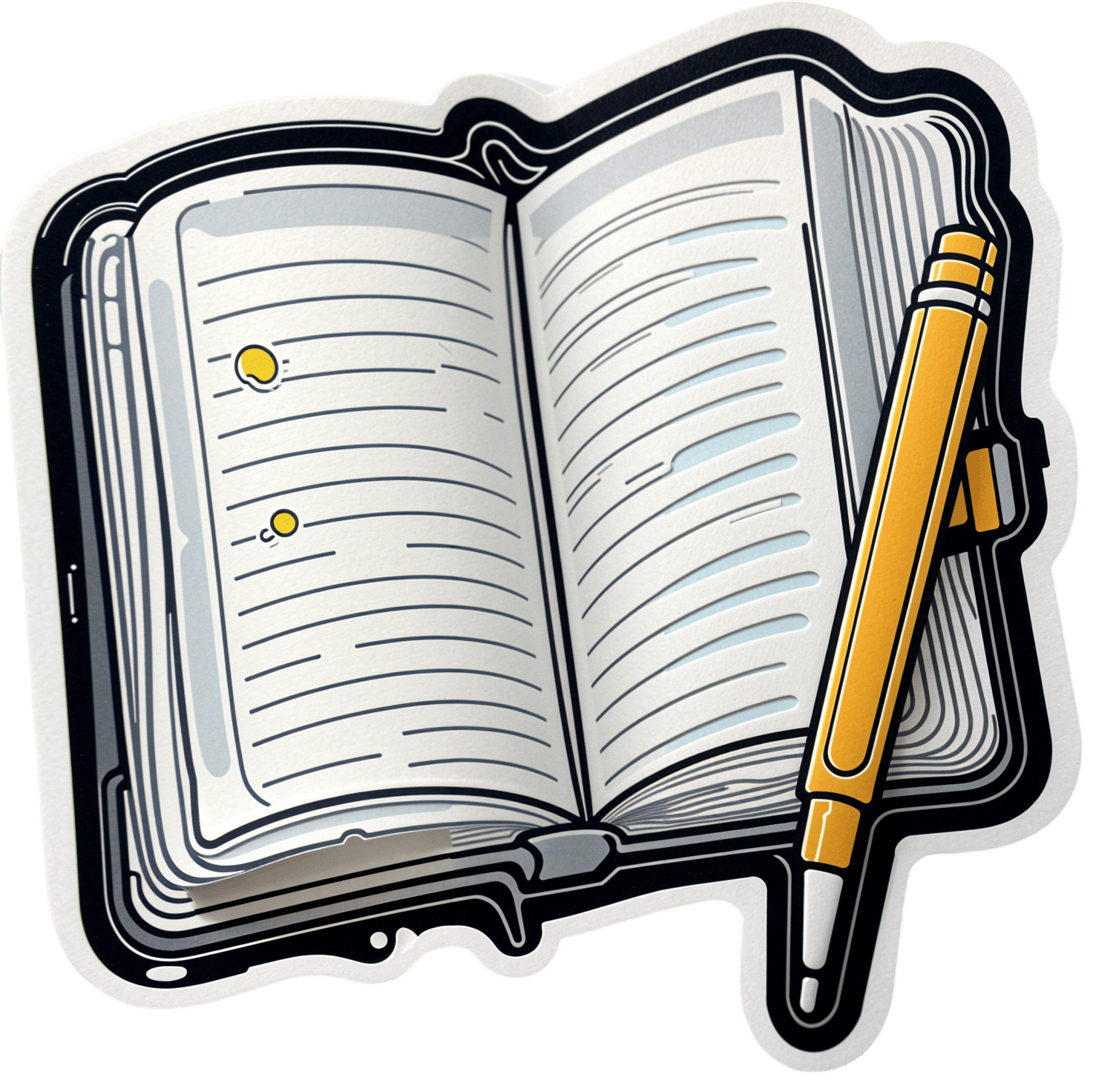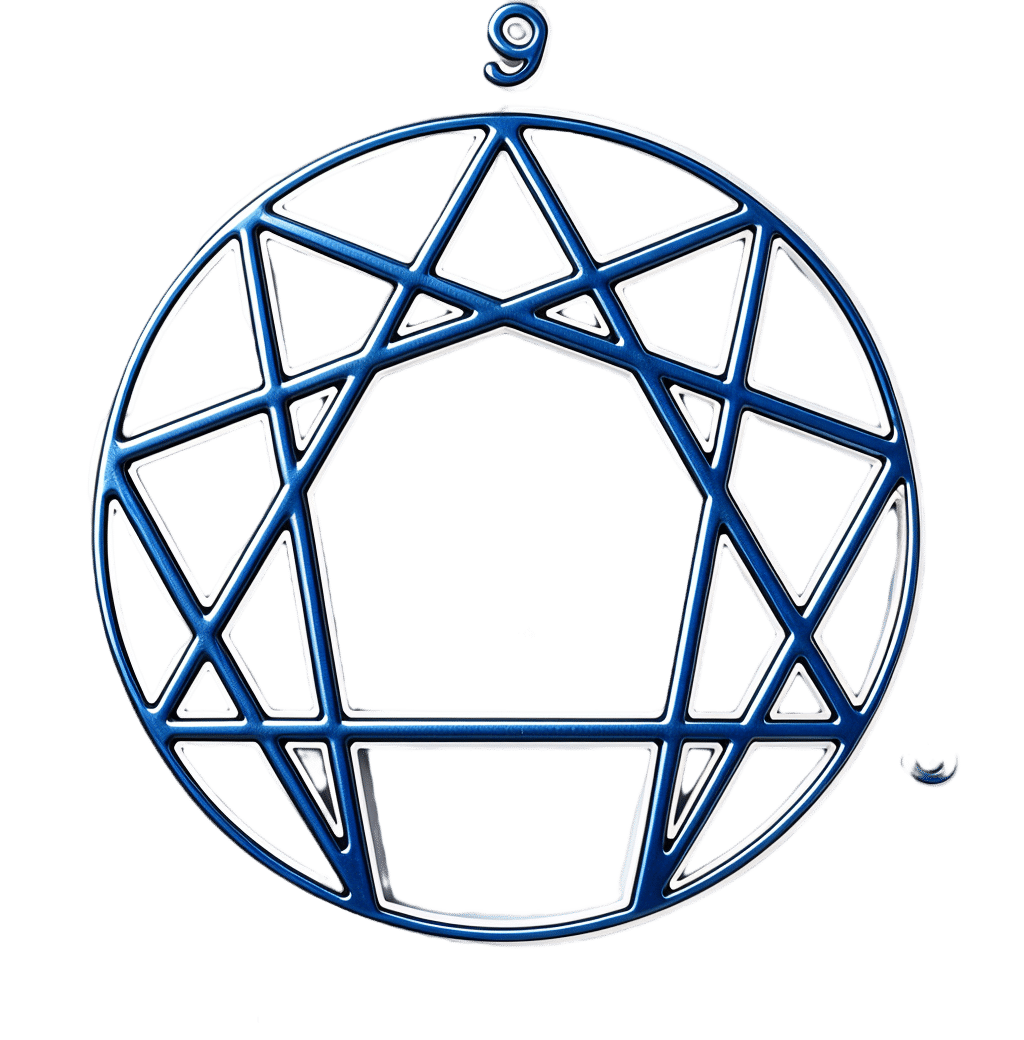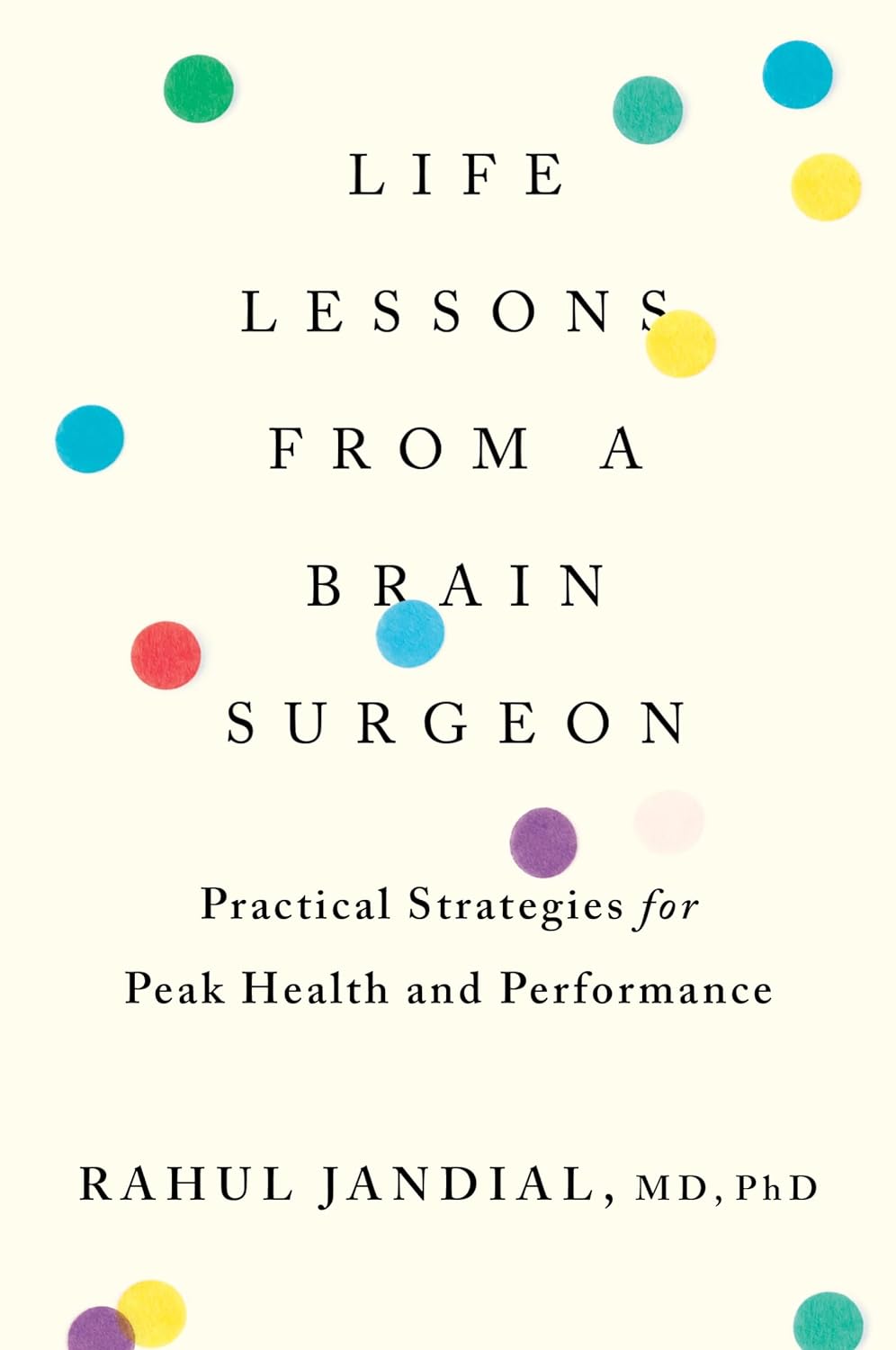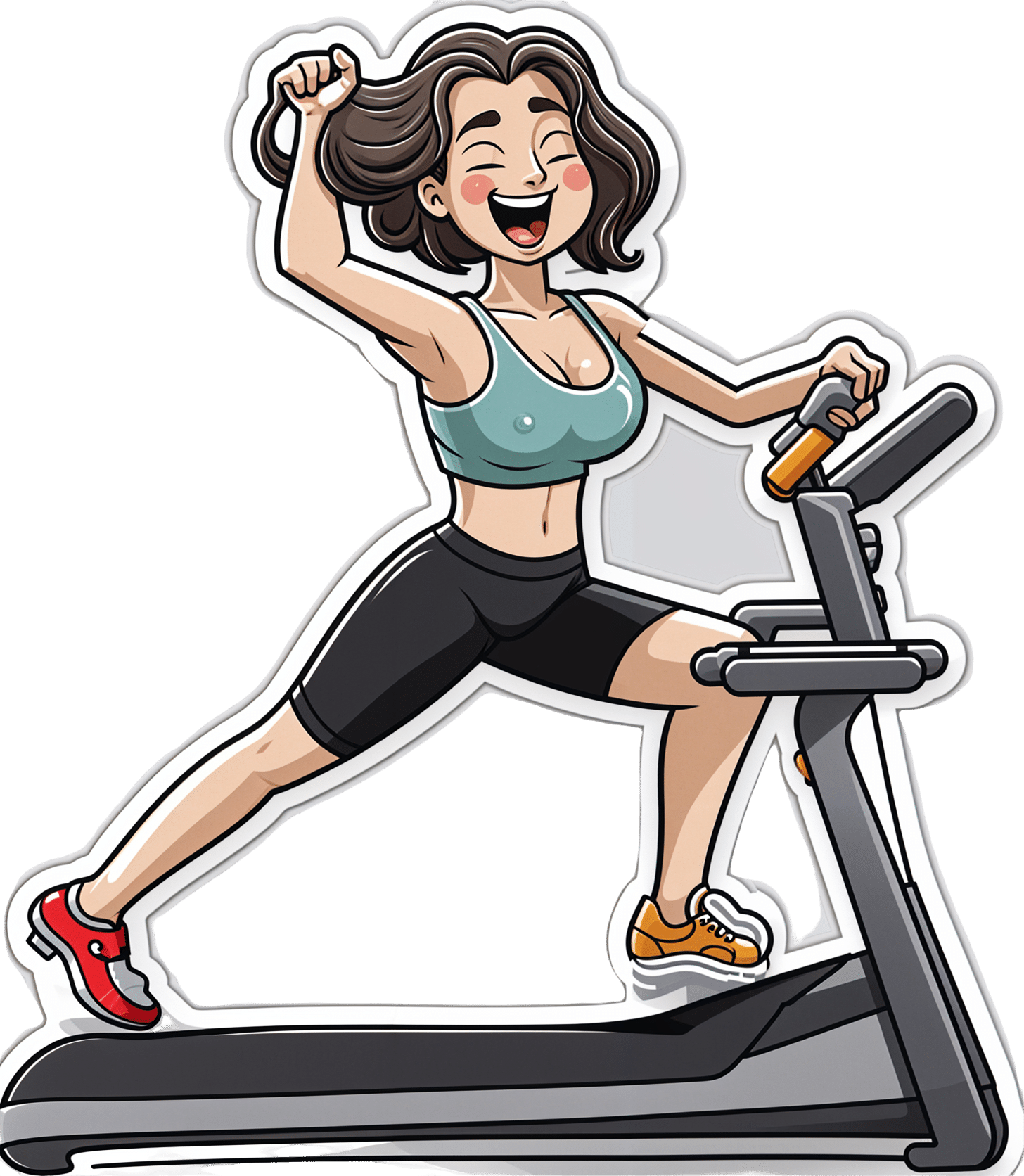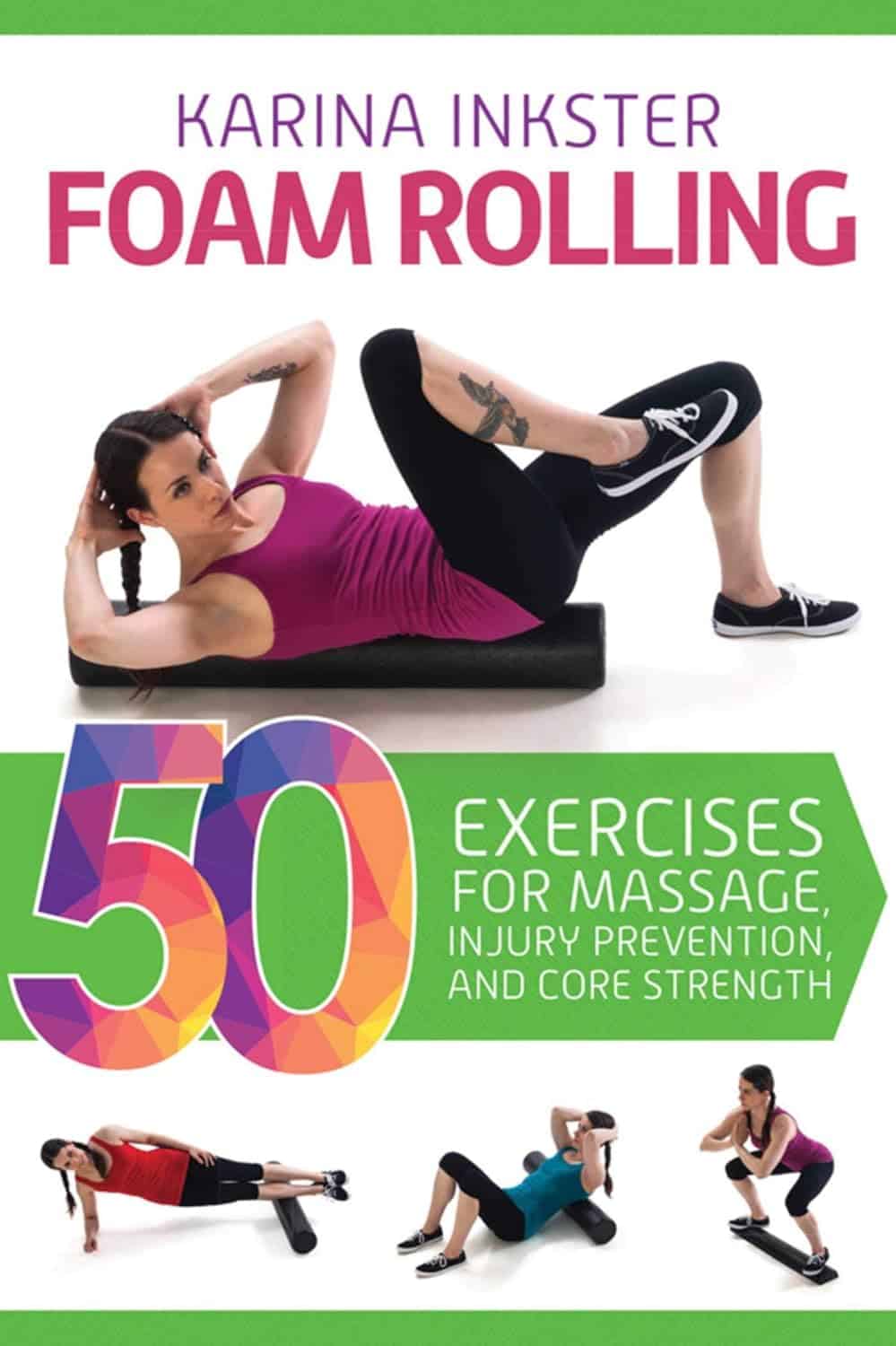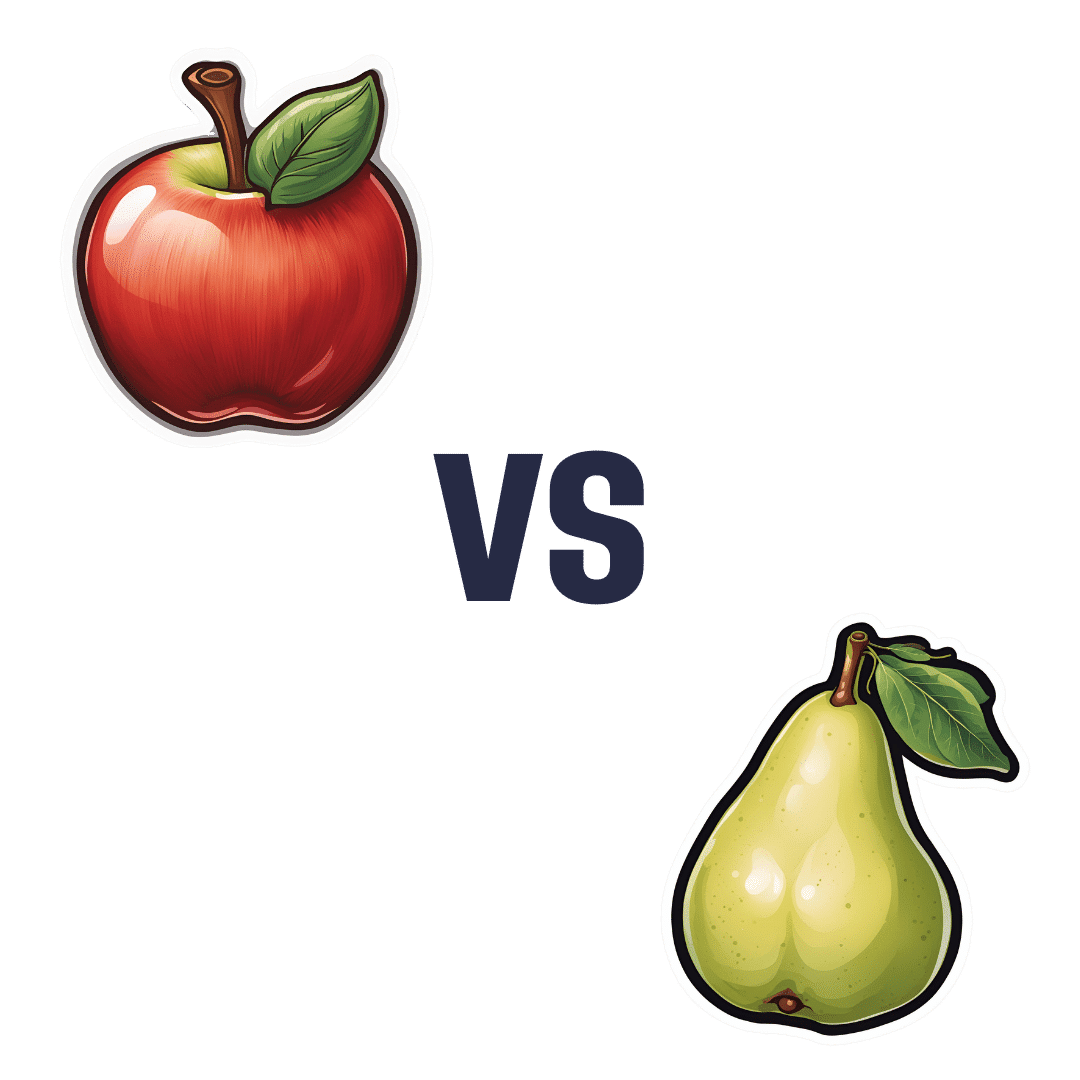
Apple vs Pear – Which is Healthier?
10almonds is reader-supported. We may, at no cost to you, receive a portion of sales if you purchase a product through a link in this article.
Our Verdict
When comparing apple to pear, we picked the pear.
Why?
Both are great! But there’s a category that puts pears ahead of apples…
Looking at their macros first, pears contain more carbs but also more fiber. Both are low glycemic index foods, though.
In the category of vitamins, things are moderately even: apples contain more of vitamins A, B1, B6, and E, while pears contain more of vitamins B3, B9, K, and choline. That’s a 4:4 split, and the two fruits are about equal in the other vitamins they both contain.
When it comes to minerals, pears contain more calcium, copper, iron, magnesium, manganese, phosphorus, potassium, selenium, and zinc. A resounding victory for pears, as apples are not higher in any mineral.
In short, if an apple a day keeps the doctor away, a pear should keep the doctor away for about a day and a half, based on the extra nutrients ← this is slightly facetious as medicine doesn’t work like that, but you get the idea: pears simply have more to offer. Apples are still great though! Enjoy both! Diversity is good.
Want to learn more?
You might like to read:
From Apples To Bees, And High-Fructose Cs: Which Sugars Are Healthier, And Which Are Just The Same?
Take care!
Don’t Forget…
Did you arrive here from our newsletter? Don’t forget to return to the email to continue learning!
Recommended
Learn to Age Gracefully
Join the 98k+ American women taking control of their health & aging with our 100% free (and fun!) daily emails:
-
The Easiest Way To Take Up Journaling
10almonds is reader-supported. We may, at no cost to you, receive a portion of sales if you purchase a product through a link in this article.
Dear Diary…
It’s well-established that journaling is generally good for mental health. It’s not a magical panacea, as evidenced by The Diaries of Franz Kafka for example (that man was not in good mental health). But for most of us, putting our thoughts and feelings down on paper (or the digital equivalent) is a good step for tidying our mind.
And as it can be said: mental health is also just health.
But…
What to write about?
It’s about self-expression (even if only you will read it), and…
❝Writing about traumatic, stressful or emotional events has been found to result in improvements in both physical and psychological health, in non-clinical and clinical populations.
In the expressive writing paradigm, participants are asked to write about such events for 15–20 minutes on 3–5 occasions.
Those who do so generally have significantly better physical and psychological outcomes compared with those who write about neutral topics.❞
Source: Emotional and physical health benefits of expressive writing
In other words, write about whatever moves you.
Working from prompts
If you read the advice above and thought “but I don’t know what moves me”, then fear not. It’s perfectly respectable to work from prompts, such as:
- What last made you cry?
- What last made you laugh?
- What was a recent meaningful moment with family?
- What is a serious mistake that you made and learned from?
- If you could be remembered for just one thing, what would you want it to be?
In fact, sometimes working from prompts has extra benefits, precisely because it challenges us to examine things we might not otherwise think about.
If a prompt asks “What tends to bring you most joy recently?” and the question stumps you, then a) you now are prompted to look at what you can change to find more joy b) you probably wouldn’t have thought of this question—most depressed people don’t, and if you cannot remember recent joy, then well, we’re not here to diagnose, but let’s just say that’s a symptom.
A quick aside: if you or a loved oneare prone to depressive episodes, here’s a good resource, by the way:
The Mental Health First-Aid That You’ll Hopefully Never Need
And in the event of the mental health worst case scenario:
The six prompts we gave earlier are just ideas that came to this writer’s mind, but they’re (ok, some bias here) very good ones. If you’d like more though, here’s a good resource:
550+ Journal Prompts: The Ultimate List
The Good, The Bad, and The Ugly
While it’s not good to get stuck in ruminative negative thought spirals, it is good to have a safe outlet to express one’s negative thoughts/feelings:
Remember, your journal is (or ideally, should be) a place without censure. If you fear social consequences should your journal be read, then using an app with a good security policy and encryption options can be a good idea for journaling
Finch App is a good free option if it’s not too cutesy for your taste, because in terms of security:
- It can’t leak your data because your data never leaves your phone (unless you manually back up your data and then you choose to put it somewhere unsafe)
- It has an option to require passcode/biometrics etc to open the app
As a bonus, it also has very many optional journaling prompts, and also (optional) behavioral activation prompts, amongst more other offerings that we don’t have room to list here.
Take care!
Share This Post
-
The Keys to Good Mental Wellbeing
10almonds is reader-supported. We may, at no cost to you, receive a portion of sales if you purchase a product through a link in this article.
The Nine Keys To Good Mental Wellbeing
Today’s main feature is a bit “pop psychology”, but it has its underpinnings in actual psychology, and is especially useful if approached from that angle.
What it’s most popularly enjoyed as:
- A personality-typing system.
- People love little quizzes and identifiers and such.
What it’s actually really useful as:
- A tool for understanding why people (including ourselves) are the way we are
- A foundational knowledge for living better ourselves, and helping others too
This stems from the fairly simple principle, uncontroversial in psychology:
- We have needs, desires, and aversions
- We act in a way that tries to get our needs met and avoid suffering
- Thus: Need/Fear → Motivation → Action
The Enneagram
The Enneagram (ἐννέα = “nine” in Ancient Greek) system posits that we each have one fundamental need/fear (from a list of nine) that’s strongest for us. A deep-seated insecurity/longing, that we’ll go to almost any lengths to try to meet. Sometimes, in good ways, sometimes, bad.
The Nine Basic Fears/Insecurities, And Their Corresponding Needs/Desires:
- Fear of being a fundamentally bad, wrong person / Need to be good and correct
- Fear of being fundamentally unloveable / Need to be loved
- Fear of being fundamentally worthless / Need to be valued
- Fear of being like everyone else / Need to be different
- Fear of being useless / Need to be useful
- Fear of being outcast / Need to have a set place in the group
- Fear of missing out / Need to experience things
- Fear of being hurt or controlled / Need to be in control
- Fear of conflict / Need to be at peace
Of course, most of us have most of these fears/needs to some extent, though usually one will stand out—especially if we aren’t managing it well. The less healthy our coping mechanisms, the more obvious it is how we’re trying to overcompensate in some fashion. For example:
- A person who fears being wrong and so becomes a perfectionist rules-abider to a fault
- A person who fears being unloveable, and so exaggerates problems to get pity, as the next best thing
- A person who fears being worthless, and so exaggerates their accomplishments in order to be admired and valued
- A person who fears being like everyone else, and so descends into a “nobody could ever possibly understand me” black hole of pathos.
- A person who fears being useless, so burns themself out trying to be an omnicompetent Leonardo da Vinci without ever actually taking the time to stop and smell the flowers as Leonardo did.
- A person who fears being outcast, so becomes clingy, passive-aggressive, and suspicious
- A person who fears missing out, so tries to experience all the things all the time, ruining their health with dizzying highs and crushing lows.
- A person who fears being hurt or controlled, so becomes aggressive and domineering
- A person who fears conflict, so shuts down at the slightest hint of it
If we have healthier coping mechanisms, these same nine people can look a lot different, but in much more subtle ways because we’re not trying to overcompensate so badly:
- A person who lives their life rationally by principles that can be adapted as they learn
- A person who loves and is loved, as perhaps the most notable part of their character
- A person who sets reasonable goals and accomplishes them, and seeks to uplift others
- A person who creates and innovates, enriching their own life and the lives of others
- A person who is simply very competent and knowledgeable, without overstretching
- A person who is dependable and loyal, and a reliable part of something bigger than themself
- A person who is fun to be around and loves trying new things, while also knowing how to relax
- A person who develops their leadership skills and is a tower of strength for others
- A person who knows how to make peace and does so—by themself, and with others
By being aware of our own fears/insecurities that may drive our motivations and thus underpin our behaviors, we can usually manage them in a much more mindful fashion. Same goes when it comes to managing interactions with other people, too:
- Letting the Type 3 know you value them, not their accomplishments or what they can do for you.
- Appreciating the Type 5’s (varied or specialist) skills and knowledge.
- Giving love to a Type 2 unprompted, but on your own terms, with your own boundaries.
- And so on for other types
Or for yourself…
- As a Type 8, remembering that you can let go sometimes and let someone else be in charge.
- As a Type 1, catching yourself holding yourself (or others) to impossible standards, and then easing up on that a little.
- As a Type 9, remembering to stand up for yourself and others, however gently, but firmly.
- And so on for other types
If you’re unsure what to focus on, ask yourself: what’s your worst nightmare or greatest daydream? Then work out what it is about that, that makes it feel so bad or good.
Then, approach things mindfully. Catch yourself in your unhealthy coping mechanisms, and find healthy ones instead.
What if I get my type wrong? Or I get someone else’s type wrong?
Obviously it’s better to get them right for maximum effect, but you can never go too far wrong anyway… because we all have all nine of those qualities in us, it’s just a matter of how strong a factor each is for us. So in the worst case scenario, you’ll make someone feel more secure about something that was only a very minor insecurity for them, for example.
Or in the case of your own type, you may mistakenly think you’re acing being the world’s healthiest Type 5, until you realize you’re actually a Type 3 who thought learning all those things would make you more worthy (spoiler: those things are great, but you’re worthy already). Again, not the end of the world! No matter what, you’re learning and growing, and that’s good.
Want to delve further?
Read: The Nine Enneagram Type Descriptions (Basic, but more detailed descriptions than the above)
Read: How The Enneagram System Works (More complex. Now we’re getting into the more arcane stuff we didn’t have time for today—wings and lines, triads, health levels, directions of integration and disintegration, and more)
Like learning from books? Here are our top two picks, depending on your learning style:
- The Wisdom of the Enneagram – Very comprehensive textbook and guide to improving your coping mechanism and growing as a person.
- The Enneagram Made Easy – it explains it with cartoons!
We’d love to offer a quick free test here, but all the tests we could find either require paid registration or are wildly inaccurate, so we’ll not waste your time.
However, we do also think that working it out for yourself is better, as it means you have a handle on what those ideas, fears, insecurities, desires, needs, really mean to you—that way you can actually use the information!
We’ll close by repeating our previous advice: If you’re unsure what to focus on, ask yourself: what’s your worst nightmare or greatest daydream? Then work out what it is about those scenarios that make them so bad or good. That’ll help you find your real fears/needs, such that you can work on them.
Good luck!
Share This Post
-
Life Lessons From A Brain Surgeon – by Dr. Rahul Jandial
10almonds is reader-supported. We may, at no cost to you, receive a portion of sales if you purchase a product through a link in this article.
In the category of surgeons with a “what to put on your table to stay off mine” angle, this book packs an extra punch. As well as being an experienced brain surgeon, Dr. Jandial also does a lot of cutting edge lab research too. What does this mean for us?
This book gives, as the subtitle promises, “practical strategies for peak health and performance”—with a brain-centric bias, of course.
From diet and nootropic supplements, to exercise and brain-training, we get a good science-based view of which ones actually work, and which don’t. The style is also very readable; Dr. Jandial is a great educator, presenting genuine scientific content with very accessible language.
Bottom line: if you’d indeed like to look after your most important organ optimally, this book gives a lot of key pointers, without unnecessary fluff.
Share This Post
Related Posts
-
Aging Well: Exercise, Diet, Relationships
10almonds is reader-supported. We may, at no cost to you, receive a portion of sales if you purchase a product through a link in this article.
Questions and Answers at 10almonds
Have a question or a request? You can always hit “reply” to any of our emails, or use the feedback widget at the bottom!
This newsletter has been growing a lot lately, and so have the questions/requests, and we love that! In cases where we’ve already covered something, we might link to what we wrote before, but will always be happy to revisit any of our topics again in the future too—there’s always more to say!
As ever: if the question/request can be answered briefly, we’ll do it here in our Q&A Thursday edition. If not, we’ll make a main feature of it shortly afterwards!
So, no question/request too big or small
I am interested in the following: Aging, Exercise, Diet, Relationships, Purpose, Lowering Stress
You’re going to love our Psychology Sunday editions of 10almonds!
You may particularly like some of these:
- Seriously Useful Communication Skills! ← this is about relationship stuff
- Lower Your Cortisol! (Here’s Why & How) ← about “the stress hormone”
- How To Set Your Anxiety Aside ← these methods work for stress too
(This coming Psychology Sunday will have a feature specifically on stress, so do make sure to read that when it comes out!)
Don’t Forget…
Did you arrive here from our newsletter? Don’t forget to return to the email to continue learning!
Learn to Age Gracefully
Join the 98k+ American women taking control of their health & aging with our 100% free (and fun!) daily emails:
-
Foam Rolling – by Karina Inkster
10almonds is reader-supported. We may, at no cost to you, receive a portion of sales if you purchase a product through a link in this article.
If you’ve ever bought a foam roller only to place it under your lower back once and then put it somewhere for safekeeping and never use it again, this book will help fix that.
Karina Inkster (what a cool name) is a personal trainer, and the book also features tips and advice from physiotherapists and sports medicine specialist doctors too, so all bases are well and truly covered.
This is not, in case you’re wondering, a book that could have been a pamphlet, with photos of the exercises and one-liner explanation and that’s it. Rather, Inkster takes us through the anatomy and physiology of what’s going on, so that we can actually use this thing correctly and get actual noticeable improvements to our health from it—as promised in the subtitle’s mention of “for massage, injury prevention, and core strength”. To be clear, a lot of it is also about soft tissue mobilization, and keeping our fascia healthy (an oft-underestimated aspect of general mobility).
We would mention that since the photos are pleasantly colorful (like those on the cover) and this adds to the clarity, we’d recommend springing for the (quite inexpensive) physical copy, rather than a Kindle edition (if your e-reader is a monochrome e-ink device like this reviewer’s, anyway).
Bottom line: this book will enable your foam roller to make a difference to your life.
Click here to check out Foam Rolling, and get rolling (correctly)!
Don’t Forget…
Did you arrive here from our newsletter? Don’t forget to return to the email to continue learning!
Learn to Age Gracefully
Join the 98k+ American women taking control of their health & aging with our 100% free (and fun!) daily emails:
-
Spoon-Fed – by Dr. Tim Spector
10almonds is reader-supported. We may, at no cost to you, receive a portion of sales if you purchase a product through a link in this article.
Dr. Spector looks at widespread beliefs about food, and where those often scientifically disproven beliefs come from. Hint, there’s usually some manner of “follow the money”.
From calorie-counting to cholesterol content, from fish to bottled water, to why of all the people who self-report having an allergy, only around half turn out to actually have one when tested, Dr. Spector sets the record straight.
The style is as very down-to-earth and not at all self-aggrandizing; the author acknowledges his own mistakes and limitations along the way. In terms of pushing any particular agenda, his only agenda is clear: inform the public about bad science, so that we demand better science going forwards. Along the way, he gives us lots of information that can inform our personal health choices based on better science than indiscriminate headlines wildly (and sometimes intentionally) misinterpreting results.
Read this book, and you may find yourself clicking through to read the studies for yourself, next time you see a bold headline.
Bottom line: this book looks at a lot of what’s wrong with what a lot of people believe about healthy eating. Regular 10almonds readers might not find a lot that’s new here, but it could be a great gift for a would-be health-conscious friend or relative
Don’t Forget…
Did you arrive here from our newsletter? Don’t forget to return to the email to continue learning!
Learn to Age Gracefully
Join the 98k+ American women taking control of their health & aging with our 100% free (and fun!) daily emails:

